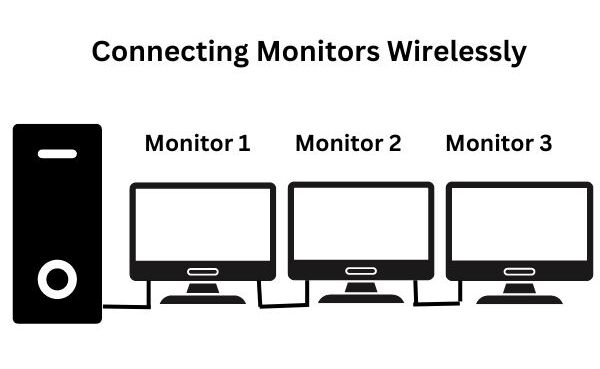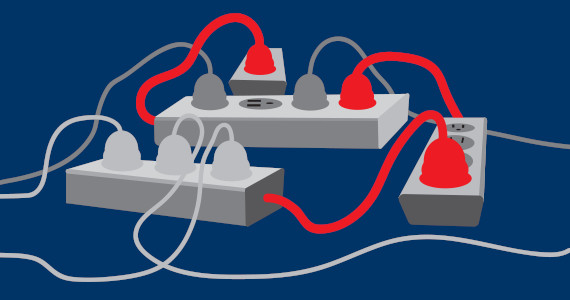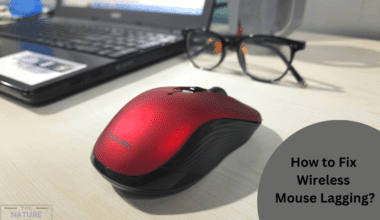If you still rely on daisy-chaining one surge protector to another for daily use, you should know that you are risking your and your devices’ life!
Surge protectors control the excess flow of electricity to keep electronic devices safe. Therefore, daisy-chaining will overkill the entire purpose.
However, you can still daisy chain surge protectors in some cases. Read on to find out its pros and cons.
Table of Contents Show
Is It Safe To Daisy Chain Surge Protectors?
A Daisy chain connects several devices in a linear series by limiting the usage of excessive cables or devices.
Daisy-chaining multiple monitors in a workplace is a common practice to run a series of monitors simultaneously.

However, daisy chaining surge protectors may be a bad idea as it results in significant damage because they are not designed to be plugged into one another.
Instead of suppressing the surge, it will amplify the power, doing unimaginable damage.
It may invite safety hazards if the surge protectors fail or are turned off. The damage severity may increase depending on the number of connected devices and power consumed.
Watch the video to learn how surge protectors work,
The U.S. Office of Compliance reported that a quarter of all fire hazards caused by surge protectors occurred due to daisy-chaining.
All devices plugged into a single connector and fed to a single source create power overload or surge, resulting in excess current flow and fire outbreaks.
Daisy chaining surge protector is not recommended as they can work against each other, causing you to have the sort of degraded power you’re trying to avoid.
In fact, it could harm their electronics more than if they had no surge protector at all.
Here are some reasons why you should not daisy chain surge protectors.
1. Fails To Divert Excess Current
A surge protector primarily functions without diverting excess voltage or current away from the connected devices and safely to the ground.
When multiple surge protectors are connected, the excess voltage has more paths to travel and fails to get into the ground.
The device will seek alternative paths, such as connected devices or the main power socket.
2. Device Malfunction
The power surge is more likely to travel to the electronic appliances connected to it.
Most power strips and surge protectors are only approved for providing power to a maximum of four or six devices.
The devices plugged in the surge protector will take in more current, leading to most device failures, circuit breaker trips, de-energizing computers, burned connection ports, and short-circuit electrical.
3. Surge Protector Wears Out
Every surge protector can only absorb a specific amount of voltage, known as “joule rating.”
If a surge protector with 800 joules takes a 200-joule hit, it would have 600-joule of protection left, but if it takes a hit of 900 joules, it fails to provide protection.
Similarly, the surge protector will wear out from it.
4. Fire Hazard
The overload of devices to a surge protector will result in excess current flow, which may sometimes lead to fire hazards.
Improper use and overloading of surge protectors are the primary reasons for most fire outbreaks in most homes.
Luckily the occupants found it and turned it off immediately to prevent further Fire damage.
Minor incidents like these are widespread around the holiday season when you tend to plug multiple heavy-power devices into the surge protector.
When Is It Safe To Daisy Chain Surge Protectors?
Despite its dangers, daisy chaining surge protectors may work in some instances.
Experts point out that you can plug as many devices into a wall outlet as you want, but it should not exceed the rated current draw or wattage requirement, usually over 75%.
If you live in the United States, a typical outlet is rated at 15 amps (120 volts), which equates to 1800 watts.
Some surge protectors are rated for 20 amps, sustaining power surge to a maximum of 2400 watts. However, it is never better to push it.
When daisy chaining surge protector, ensure to utilize a powerstrip or extension cord to minimize risks.
1. For Temporary Use
Consider daisy chaining surge protector and extension cord if you only use it for a short time.
However, do not make this a permanent fixture.
You can connect a load drawing more than 15 amps to the outlet only when no other loads are present on the same circuit.
2. Stormy Weather And Lighting
It is a good idea your low-powered electrical appliances are connected to the surge protector in bad weather to avoid damage from a sudden power surge.
Your surge protector can take sudden power surges during lighting, but not above amp capacity.
The only way to ensure 100% protection is to unplug every high-powered device such as a television, vacuum, washing machine, microwave, etc.
3. Non-Heavy Appliance
Connecting non-heavy appliances to a surge protector when daisy-chained to a power strip is okay. They are less likely to get damaged by a power surge.
If you accidentally overload the circuit, the breaker will trip and de-energize the circuit before a Fire begins, which may indicate what devices not to connect to the surge protector next time.
4. Ampacity
Daisy-chaining surge protector to a powerstrip is fine when the latter has high ampacity (maximum current it can carry without exceeding temperature rating).
How Many Surge Protectors Can You Daisy Chain?
You can daisy chain several surge protectors together if it will not increase the clamping voltage.
A quora commentor points out that wiring two surge protected strips in series is fine as long as the total load does not exceed the capacity of a single socket.
Since all of the MOV (Metal Oxide Varistors) used for limiting voltage during a surge in the suppressor units are parallel, the voltage across all the protectors remains the same.
However, if one surge protector gets fried due to excessive current, the second unit may fire when the voltage exceeds its clamping VPR (voltage protection rating).
Therefore, you should avoid plugging heavy-powered devices when piggybacking two or more surge protectors.
Even better, avoid daisy chaining two or more surge protectors for safety purposes.
What Devices To Plug Into Surge Protector?
Always look to connect expensive devices to the surge protector. For example;
- Computer
- Flat-screen televisions
- Stereo systems
- Laptop
- Monitors
- Fax/Printers
Never plug the microwave, space heater, and portable air conditioner into the surge protector, but always connect them directly to the power outlet.
Consider using a power strip for smaller items like alarm clocks, coffee makers, phone chargers, and lamps.

How many devices you can connect to a surge protector would depend on their power consumption and the number of devices.
You can connect as many devices as long as they are not over-consuming the electricity supported by the surge protector.
A surge protector joule rating would indicate how much electricity it can absorb before failure. The higher the joules, the greater the surge protection provided.
Is it Ok to Connect the Surge Protector to a Powerstrip?
Do not mistake the powerstrip (extension cord) with the surge protector.
A surge protector may look like a power strip, but it is not just a peripheral with many outlets; it absorbs or clamps the power surge that would otherwise damage the device.
Many users connect a surge protector to a power strip which may sound eligible but could do more damage.
The biggest thing is ensuring that the powerstrip cord can handle the amount of load inhibited by the surge protector.
Otherwise, you risk putting excess load on the powerstrip, causing a fire hazard or other damages.
What Are Some Alternatives To Daisy-Chaining?
The Office of Compliance provides several safe alternatives to daisy chaining surge protectors.
- Move equipment that needs electrical power closer to existing outlets to avoid connecting to surge protector.
- Choose the surge protector with the appropriate load capacity to meet the electrical power needs.
- Replace a power strip with a surge protector of adequate length to reach an outlet to connect heavy-powered devices.
- If possible, always add more outlets in your home or office to meet the electrical power needs.
Conclusion
Daisy-chaining surge protectors is never a good idea as it involves a certain amount of risk.
Consider finding reliable alternatives or take several safety measures before daisy chaining two or more devices.
The consensus says not to daisy chain surge protectors, but it will always come down to your preference.
Drop-in your comment to let us know if you faced a problem with daisy chaining surge protectors.


